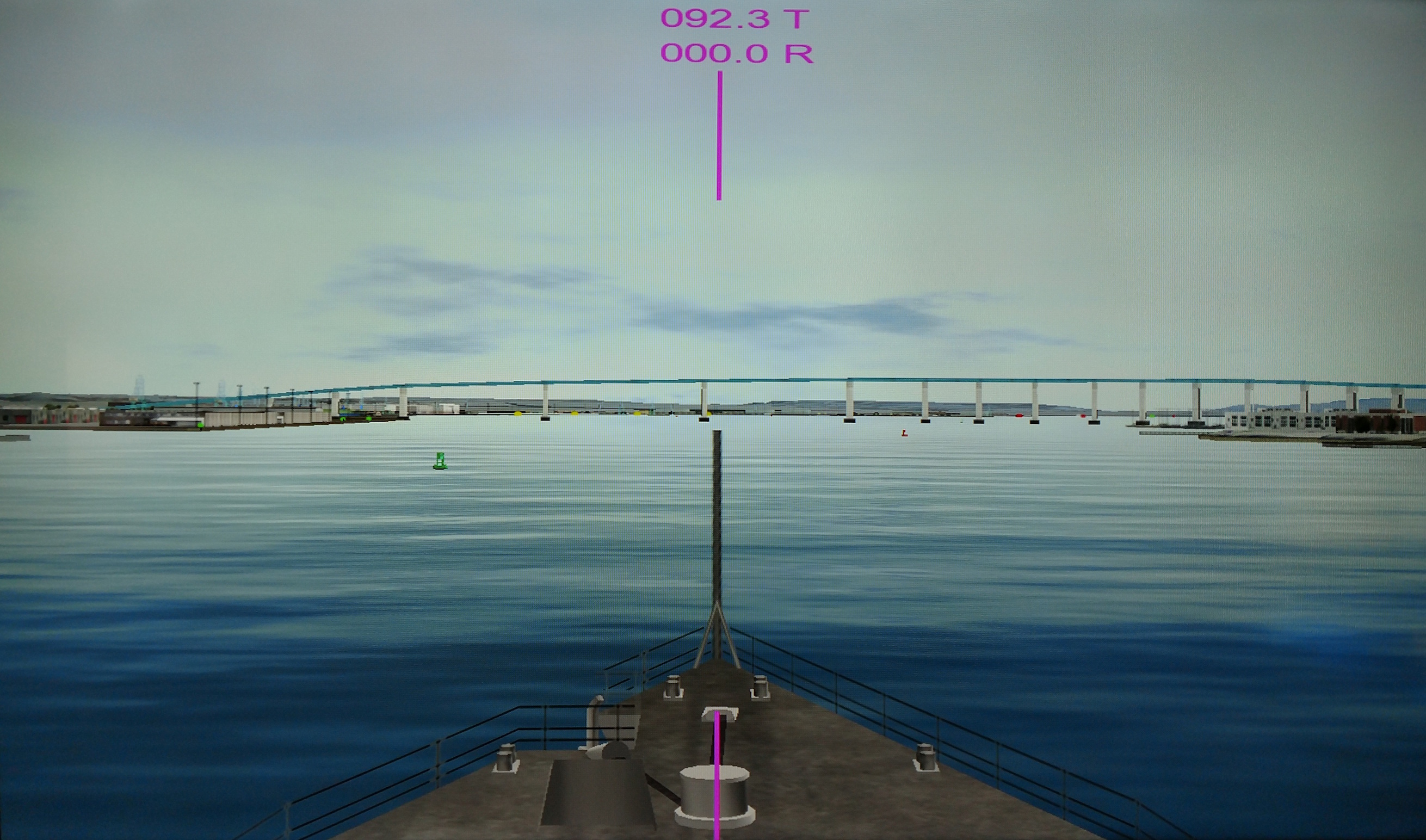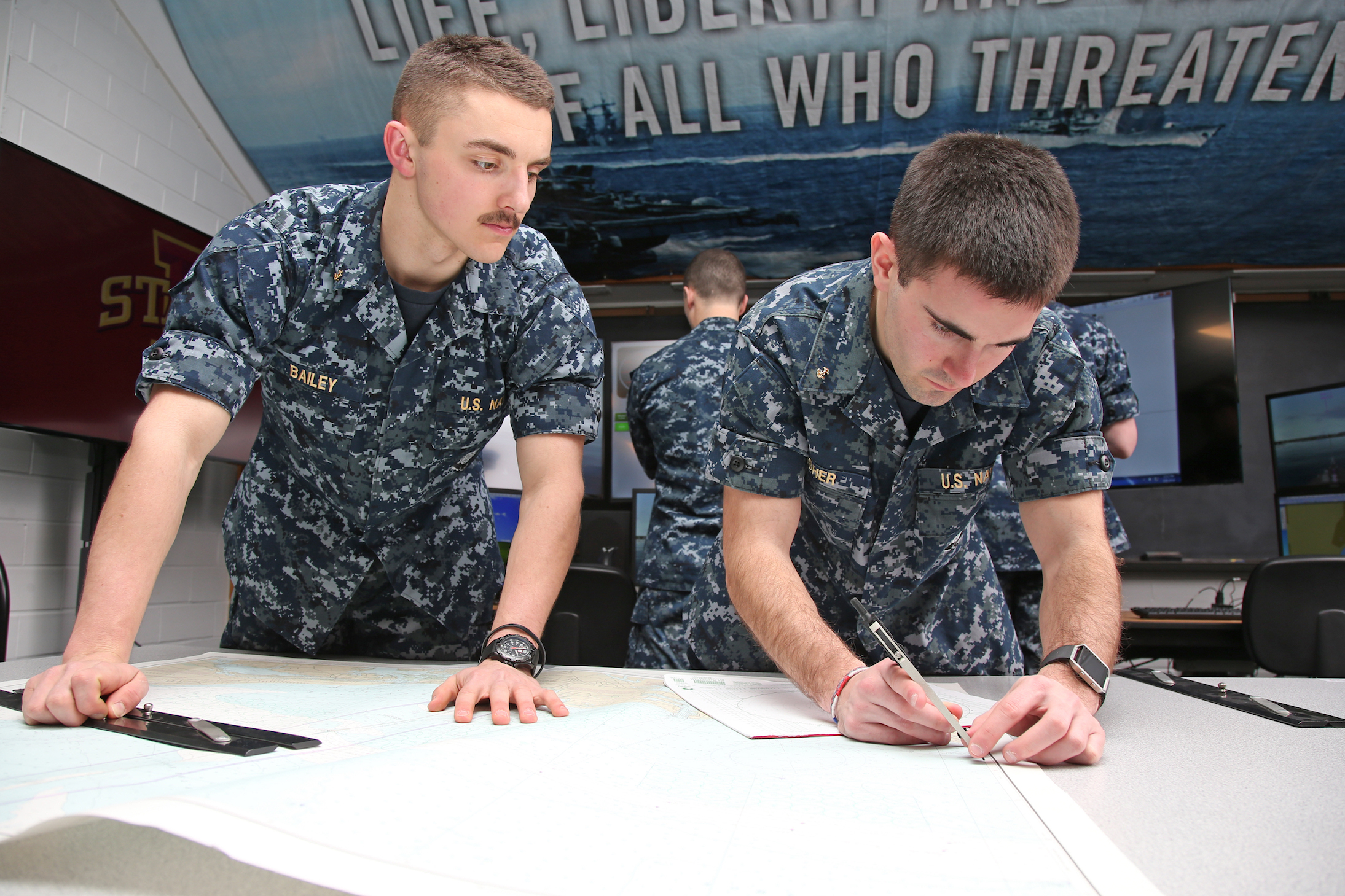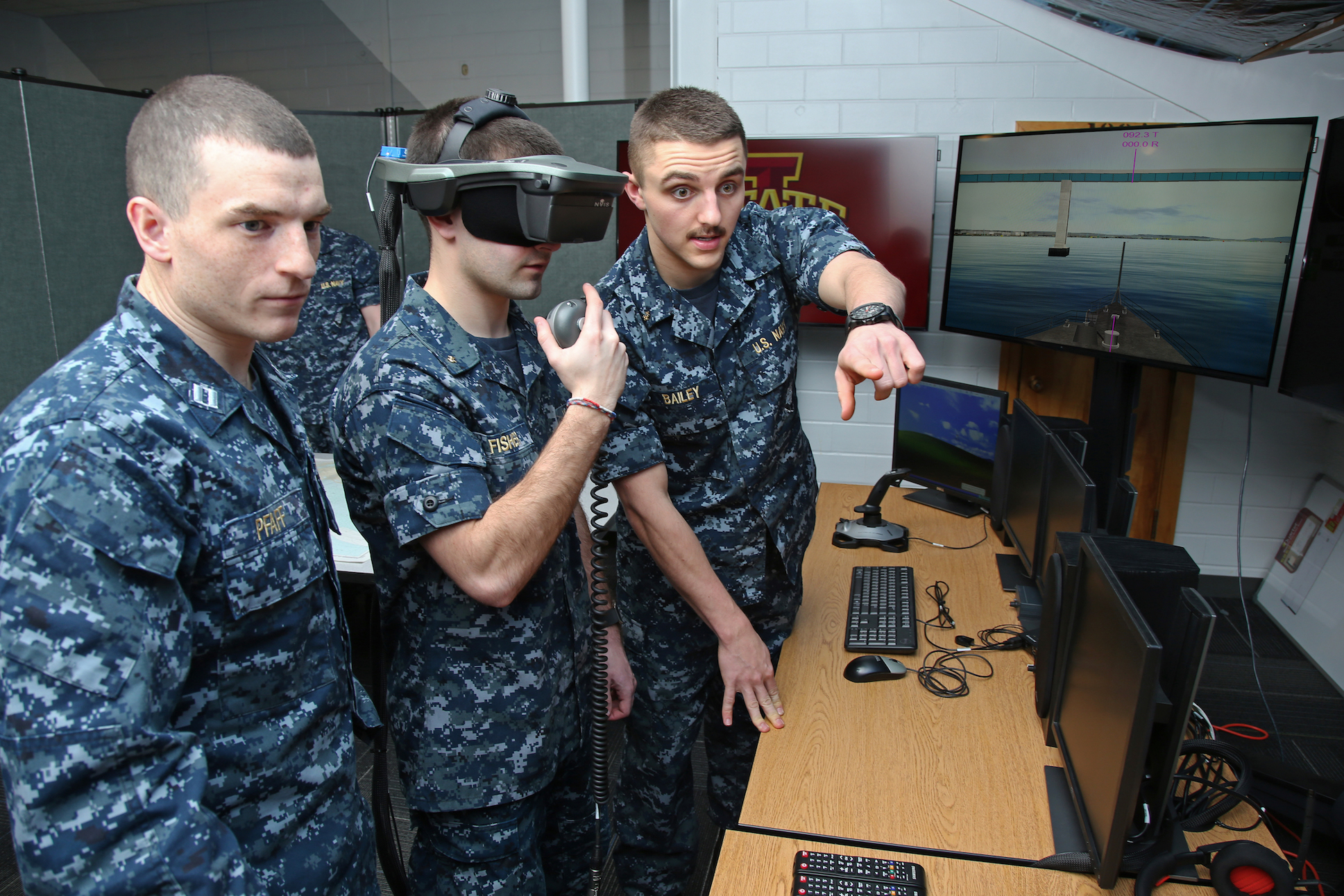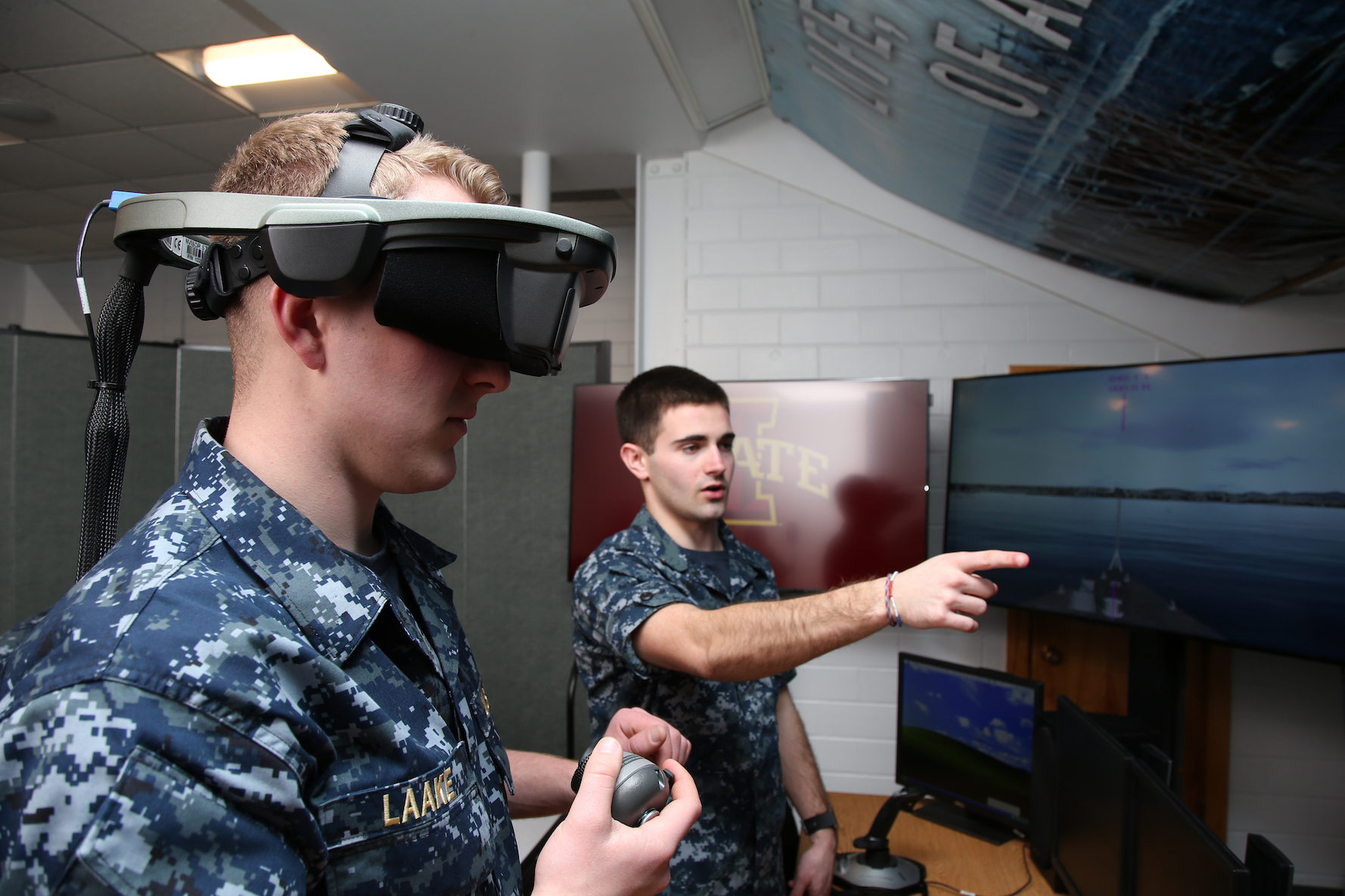Red buoys are on your right. Point Loma is in the distance. Standing on the bridge of a U.S. Navy destroyer, you navigate into sunny San Diego, alert to the bustling sailboat traffic as the familiar city skyline welcomes you to shore.
And—crunch. You just bashed a billion-dollar Navy vessel into the pier.
Good thing this was practice. Thanks to virtual reality, Navy ROTC midshipmen at Iowa State University can now navigate a U.S. Navy ship anywhere in the world and practice the fundamentals of ship-handling long before they ever actually set out to sea.
The Iowa State Navy ROTC began using COVE (Conning Officer Virtual Environment), a U.S. Navy ship handling simulator, during the fall 2017 semester. Although COVE is not new for the Navy, fewer than half of the 62 Navy ROTC units in the United States currently have it. In a landlocked state, it is essential.
“Out here in Iowa, if you don’t have this, you have nothing,” Capt. Scott Curtis, professor and chair of the Department of Naval Science, said. “We are lucky to have it. Iowa State is special that way.”
Facing reality
Wearing the virtual reality headset, Iowa State midshipmen experience how a real ship, like the Arleigh-Burke destroyer—the mainstay of the Navy—handles in open water or in congested ports. Giving orders with voice commands, midshipmen feel how the ship reacts to wind and current and can turn their heads to look in any direction. If they run aground or clip a pier, they hear it happening via audio feedback. During the session, the headset view is projected on large-screen TVs in the classroom, and COVE creates a log of each session for later review.
The virtual reality system is remarkably detailed with real-life landmarks such as the submarine base in San Diego. Want to add sea lions? Practice whale avoidance? It is all in the program. While it sounds fun, the realism exists for serious reasons.

“It starts building a sense of ‘This is what normal looks like,’” Curtis said. “You can tell someone in a book, ‘When you come back, you’ll see red buoys on your right,' but they’re not going to get used to it. After you use the ship-handling simulator a few times, if you ever see a red buoy on your left side, you would say, ‘Whoa, something is horribly wrong.’”
Two deadly U.S. Navy collisions in 2017 involving the USS Fitzgerald and USS John S. McCain reinforced the need for better training on ship fundamentals, Curtis said.
“Those collisions were due to a lot of reasons, but one was people not driving ships properly,” Curtis said. “Not looking around. Just like if you get in a car accident and say, ‘Oh, I didn’t see the guy.’ Well before midshipmen even get to the fleet, we are trying to teach them the fundamentals of safely driving ships. Fundamental skills for which, without this system, there is zero opportunity.”
"Well before midshipmen even get to the fleet, we are trying to teach them the fundamentals of safely driving ships. Fundamental skills for which, without this system, there is zero opportunity.”
Think navigating game-day traffic at Jack Trice Stadium is hard? Try parking a Navy warship safely between two other docked ships on a breezy day.
“It’s relatively easy when you have it to yourself, but on a nice day in San Diego there are sailboats everywhere,” Curtis said. “That’s another level of distraction because you have to account for those things.”

Curtis said COVE helps midshipmen see how piloting a 500-foot-long destroyer in confined waters can be much more complicated than they thought.
“It teaches them in a safe environment, so that their first experience isn’t pulling into Hong Kong with ships everywhere, and it’s a free-for-all,” he said.
Ensign Sean-Paul Stickelman (’17 industrial technology) graduated last December. Now stationed in San Diego, he was one of the first Iowa State midshipmen to train on COVE.
“COVE helps a lot, when you haven’t been exposed to water, compared to others,” Stickelman said. “It gives you a sense of the ports you will be looking at. It gives you the dynamics of actually how many people are associated with navigating a ship on a bridge.”
Those selected to join surface ships will log the most time with COVE, but all midshipmen will build core competency on the system. Curtis hopes prospective ROTC students can even try it on campus visits.
All of the preparation makes sure midshipmen are ready to contribute on day one to the Navy’s overall charge of preparing naval forces capable of winning wars, deterring aggression and maintaining freedom of the seas.

"This is an investment by the Navy to train future naval officers in the fundamentals of what it takes to safely operate a ship."
“This is an investment by the Navy to train future naval officers in the fundamentals of what it takes to safely operate a ship,” Curtis said. “On day one, when they show up to their ship, they can walk aboard. If the ship is getting underway that day, they can drive it. They know what they’re doing.”
Inside this Navy ROTC classroom, Cyclones truly are everywhere.
